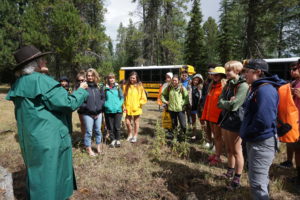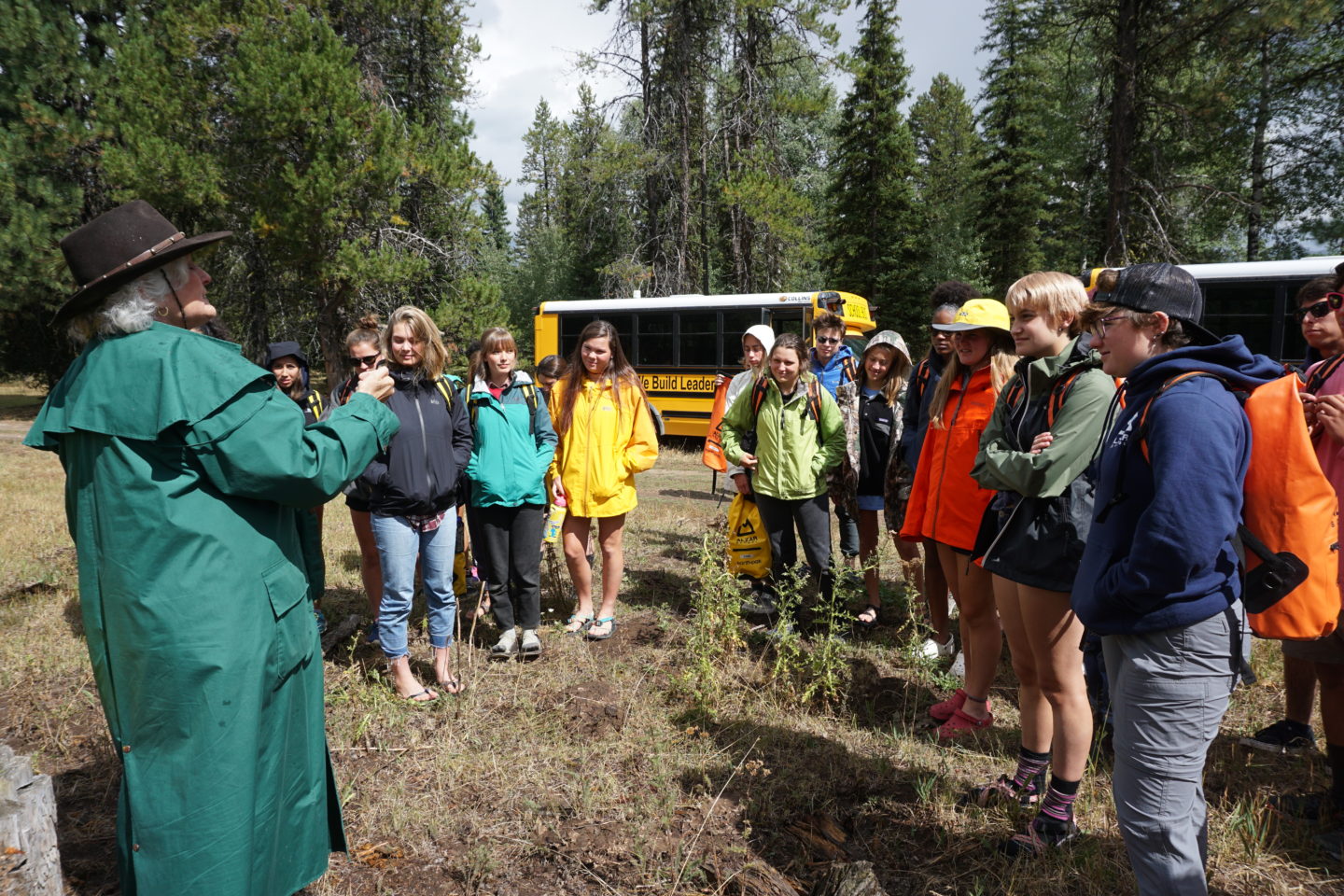Rasperry Ranch Ramblin’
As we enter the fifth week of Semester 15, it is hard to believe that our first Idaho expedition is just around the corner! Prior to departure into the Idaho backcountry, students had the opportunity this week to gather some place-based knowledge, learning about ecosystem dynamics at play in central Idaho.
On Monday, students engaged with local author, historian, rancher and forest manager, Carol MacGregor, on her 2,200-acre property, Raspberry Ranch, LLC. MacGregor is a multi-generational Idahoan whose grandfather settled here in the early 1900’s – her family has been managing forest lands ever since.

Carol’s land is adjacent to the Payette National Forest and she noted clear distinctions between the two properties in terms of timber stand management. In fact, MacGregor has cleared a 100-foot wide zone between the National Forest and her own land, which serves as a buffer in the case of fire occurrence in the public land space. Carol sustainably manages her land for multiple uses through forestry practices such as limbing and removing dead, diseased trees from her land. For instance, the recent outbreak of Douglas fir tussock-moth, a native species to Idaho, has resulted in widespread acres of dying trees. Removal of these dead, dry snags reduces fire severity in the case of a burn.
MacGregor also practices forested grazing (see Silvopasture,) a traditional practice that is often lost amid contemporary pastoral norms. In this way, her property remains partially forested while also providing space for roughly 1,000 head of cattle. Such multiple-use forest management enhances biodiversity, thereby building resilience in the ecosystem.
MacGregor also spoke of concerns regarding air pollution associated with increased fire frequency. Such high levels of air pollution stand to undermine enhanced legal protections in recent decades, such as the Clean Air Act (1970), tailpipe emission regulations and Obama era fuel standards. Forested grazing and reforestation can act as a buffer for air pollution, in addition to the benefits of reduced soil erosion and added protection for grazers.
Students asked their gracious host a series of thoughtful questions, including:
- What are the most prominent invasive species threatening Idaho forests?
- How do you prevent and manage overgrazing?
- Growing up, did you ever think you would be a rancher?
- What is the piece of skin dangling from the cow’s necks?! FUN FACT – These “wattles” are a form of branding, or a means of cattle identification between ranchers.
Interested in fire history in the U.S. West!? Check out the book Big Burn by Timothy Egan.
About the author: Rachel Ackerman is a Science Teacher and a Blog Coordinator at Alzar School. Feel free to contact her at rackerman@alzar.org with comments, concerns, and interesting topics for future blog posts!

